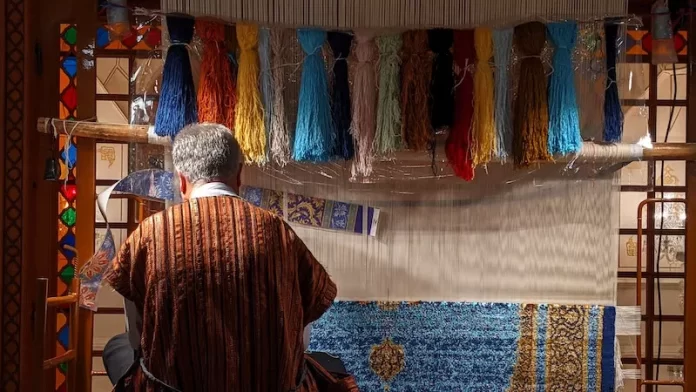In a significant move to revitalize its struggling carpet export industry and generate much-needed hard currency, Iran has announced the relaxation of rules governing the export of its world-renowned hand-woven carpets. The decision comes as the country seeks to rebound from the economic challenges posed by years of international sanctions.
Farahnaz Rafe’, the head of Iran National Carpet Center (INCC), revealed this groundbreaking development, emphasizing the government’s commitment to encourage and facilitate the export of these high-quality Persian rugs. A primary change announced by Rafe’ is the removal of a long-standing requirement for carpet exporters to funnel their export proceeds into a system where importers could access hard currency at subsidized rates.
The policy alteration is expected to reinvigorate Iran’s carpet industry, which has faced significant obstacles due to stringent export regulations. Exporters, under the previous system, were required to surrender their hard-earned foreign currency earnings, a process that had deterred many over the years and caused a sharp decline in carpet shipments.
Rafe’ confirmed that the Iranian Ministry of Finance has already granted approval for this measure, and she assured that positive developments are on the horizon.
Iran’s carpet industry has been grappling with challenges that have taken a toll on its exports. According to data from the Iranian customs office, carpet exports hit a record low of just $50 million in the calendar year ending in late March. This figure is significantly lower than the $700 million milestone achieved in 2018, just before the United States imposed sanctions on Iran.
However, Rafe’ pointed out that official customs statistics do not provide a comprehensive picture of Iranian carpet exports. Many exporters employ re-export strategies to deliver their carpets to clients in Europe and other parts of the world, circumventing the banking and trade restrictions imposed by U.S. sanctions.
Unofficial estimates suggest that Iran exported carpets worth between $400-500 million in the calendar year ending in late March. These figures indicate that revenues have rebounded to levels last seen in 2015, shortly after Iran emerged from a previous bout of international sanctions.
Rafe’ expressed optimism regarding the prospects of this policy change. By easing the rules governing the export of Iranian hand-woven carpets, the government aims to rekindle the sector and foster an increase in carpet shipments in the near future.
Iran’s hand-woven carpets have long been celebrated for their exceptional quality, intricate designs, and rich history. They are an integral part of Iran’s cultural heritage, and their export plays a significant role in the country’s economy. The relaxation of export rules is expected to not only benefit the local carpet industry but also enable the inflow of vital foreign currency into Iran’s economy.
This decision aligns with Iran’s broader strategy to diversify its sources of revenue, particularly in the face of economic challenges stemming from global economic shifts and ongoing sanctions. By promoting the export of these exquisite hand-woven carpets, Iran hopes to bolster its financial stability while simultaneously sharing a piece of its rich cultural tradition with the world.
As the carpet industry undergoes this transformative change, industry insiders, artisans, and exporters are eagerly awaiting the anticipated boost in carpet shipments. The future of Iranian hand-woven carpets appears brighter, as Iran takes steps to remove trade barriers and allow the world to once again experience the timeless beauty of these Persian treasures.




